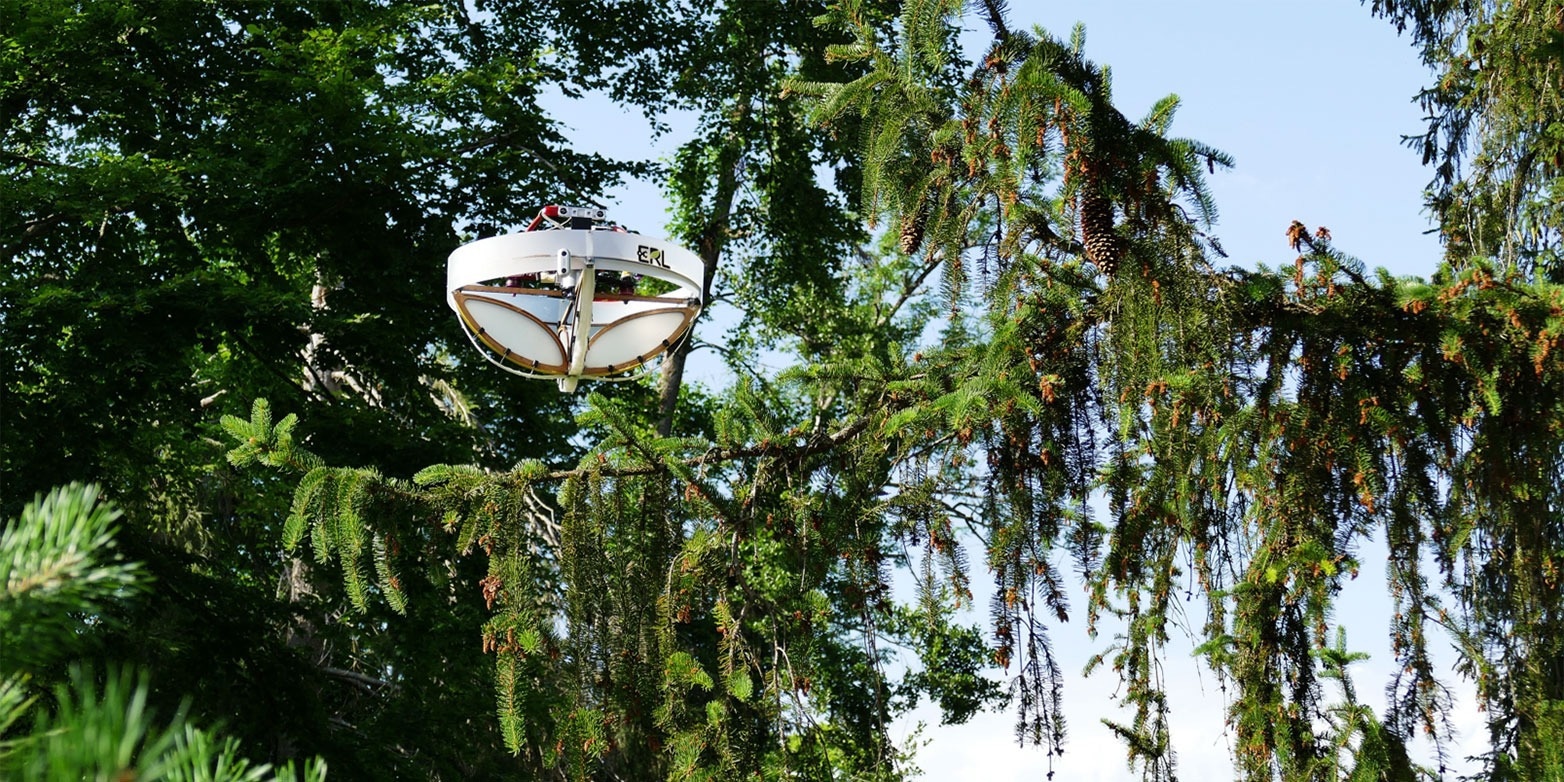Reviewed by Aimee MolineuxJan 19 2023
A flying device has been developed by scientists at ETH Zurich and the Swiss Federal research institute WSL. This device has the ability to land on tree branches to take samples.
 Image Credit: Gottardo Pestalozzi / WSL
Image Credit: Gottardo Pestalozzi / WSL
This sets the stage for scientists to think on a new dimension previously reserved for biodiversity researchers.
Ecologists are increasingly using the traces of genetic material omitted by living organisms left behind in the surrounding, known as environmental DNA (eDNA). This was done to record and track biodiversity. Depending on these DNA traces, researchers can identify which species are present in some areas.
It is simple to gain samples from water or soil, but other habitats like the forest canopy are hard to access for scientists. Therefore, several species stay unmonitored in areas that are yet to be well-explored.
Scientists at ETH Zurich and the Swiss Federal Institute for Forest, Snow, and Landscape Research WSL, and the company SPYGEN have collaborated to come up with a unique drone that could separately gather samples present on tree branches.
How the Drone Collects Material
The drone is fitted with adhesive strips. When the landing of the aircraft is made on a branch, the material from the branch sticks to those strips. Further, it becomes possible for scientists to extract DNA in the laboratory, examine it, and assign it to genetic matches of several organisms by using database comparisons.
However, not all branches tend to be similar: the elasticity and thickness will differ. Moreover, branches bend and rebound while a drone lands on them. A major difficulty for the roboticists was programming the aircraft in a way that has the potential to approach a branch separately and remain firm on it for a long time to gather samples.
Landing on branches requires complex control.
Stefano Mintchev, Professor of Environmental Robotics, ETH Zurich
Mintchev is also a professor of WSL.
Initially, the drone did not know how flexible a branch is, so the scientists equipped it with a force-sensing cage, enabling it to quantify this factor at the scene and integrate it into its flight maneuver.
Preparing Rainforest Operations at Zoo Zurich
The newly-developed device was tested on seven tree species by scientists. In the samples, they identified DNA from 21 diverse groups of organisms, or taxa, such as mammals, insects, and birds.
This is encouraging, because it shows that the collection technique works.
Stefano Mintchev, Professor, Environmental Robotics, ETH Zurich
Mintchev co-authored the study that has just recently been published in the Science Robotics journal.
Currently, the researchers are looking for ways to enhance their drone further to get it all set to participate in a competition. For this, the research group aims to detect as many varied species as possible throughout 100 hectares of rainforest in Singapore in just 24 hours.
For the efficacy of drones to be tested under conditions similar to those it will experience at the competition, Mintchev and his group are now working at Zoo Zurich’s Masoala Rainforest.
Here we have the advantage of knowing which species are present, which will help us to better assess how thorough we are in capturing all eDNA traces with this technique or if we’re missing something.
Stefano Mintchev, Professor, Environmental Robotics, ETH Zurich
But as far as this event is concerned, the collection device should mobilize quicker and turn highly efficient. In the tests performed in Switzerland, the drone gathered material from seven trees in three days. In Singapore, it must be capable of flying and collecting samples from ten times as many trees in a single day.
But gathering samples in a natural rainforest will make the researchers experience many more difficulties. Repeated rain washes eDNA off surfaces, while clouds and wind hinder drone operation.
Mintchev stated, “We are therefore very curious to see whether our sampling method will also prove itself under extreme conditions in the tropics.”
Special drone collects environmental DNA from trees
Video Credit: ETH Zürich
Journal Reference:
Aucone, E., et al. (2022) Drone-assisted collection of environmental DNA from tree branches for biodiversity monitoring. Science Robotics. doi.org/10.1126/scirobotics.add5762.